Crop Profile: Foxgloves
Foxgloves, or Digitalis, are one of my favorite flowers to grow at our flower farm in Philadelphia. Reminiscent of adorable fairy hats, they’re easy to grow from seed, highly productive, repeat bloom during the summer, and usually bloom for two seasons, if not more. As a farmer-florist, they are a key bloom for our wedding floral designs, adding a touch of whimsical romance and a strong visual line to our bouquets at Love ‘n Fresh Flowers.
Foxglove are typically considered a short-lived biennial in our growing zone here in Philadelphia. They do not love our hot, humid summers so tend to die out after two or three seasons at the most. In other climates, such as the cool summers of the West Coast here in the U.S., foxgloves can be downright aggressive and live for many seasons as a true perennial, especially D. gradiflora and D. ambigua. Most perennials in general do not bloom abundantly the first season, but foxgloves have a few “First Year Flowering’ (FYF) varieties that make excellent cut flowers so growers can get blooms off the plants even the first summer. Our favorite FYF foxglove varieties to grow at Love ‘n Fresh Flowers are the ‘Camelot’ series and ‘Dalmatian Peach’. We also grow ‘Cafe Creme’ and ‘Summer King’, both of which are true perennials/biennials and take one season to get established before producing blooms the second year.
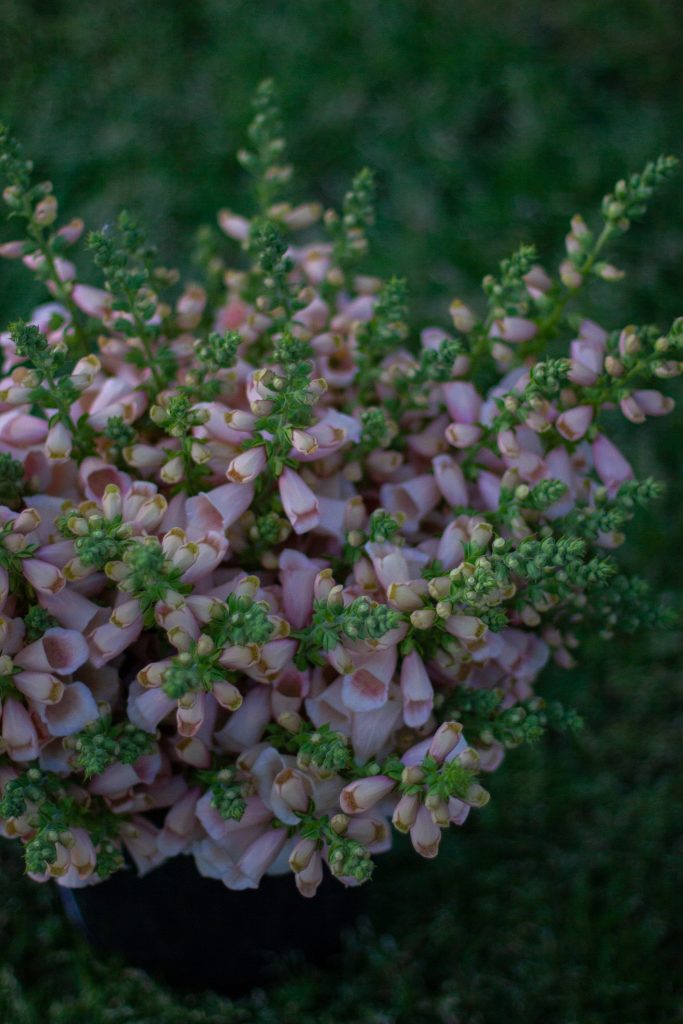
Foxglove tend to be very easy to grow from seed, which makes them a “cheap” perennial/biennial. To grow foxglove from seed, we sow seed twice a year: once in August so we have plants to put into the ground in the late fall (usually planted out in mid-October and protected through the winter with a frost blanket, a.k.a. Agribon) and once in very early spring, about 10 weeks before our last frost. Seed needs light to germinate so we “surface sow” foxglove seed on top of moist soil in 128 trays. Trays are then bottom water until seedlings are well-established, thus avoiding covering the seeds with soil and dislodging the tiny new seedlings when they first sprout. Transplants grow on in the 128 trays and we harden the off in early April and transplant outside in mid-April when frost is unlikely anymore. By planting twice a year, we have a nice long bloom time for our plants, starting in late spring and going through frost in the fall.
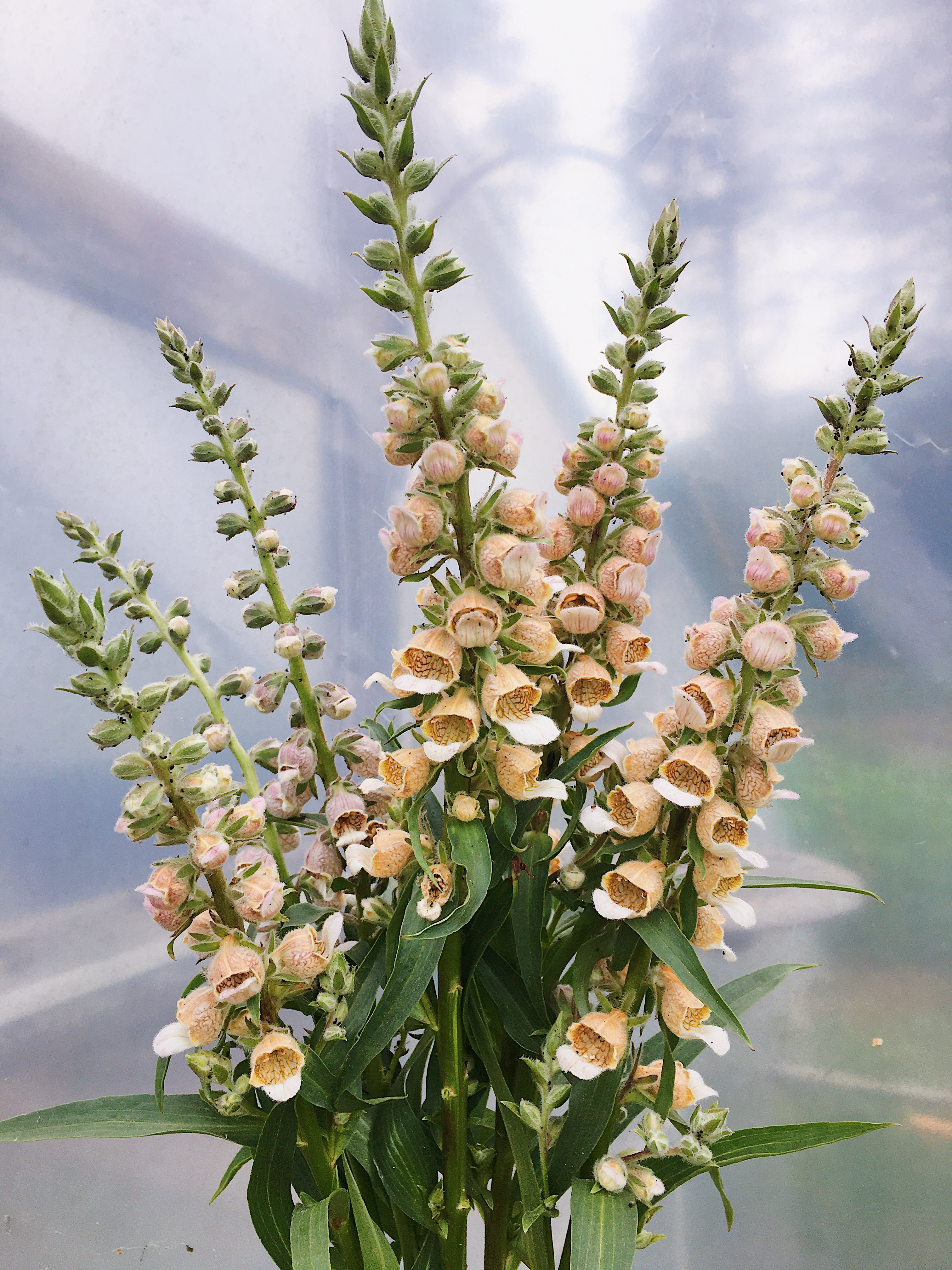
We source seeds for foxgloves from Geoseed and Johnny’s Selected Seeds, both outstanding suppliers for cut flower seeds.
The fall-planted foxglove and those that have been in the ground for more than one season tend to bloom at our farm in late May, during what we affectionately refer to as “spike season“, a period when our campanula, snapdragons, and baptisia are also blooming. Those FYF varieties that are sown and planted in the spring tend to start blooming in late summer, just when we need them for our autumn wedding designs. All foxglove benefit from regular harvesting (or deadheading), plenty of moisture, and a foliar feed of fish emulsion and kelp every week or two. When we take care of our foxglove with watering and feeding, they tend to produce all summer long, even in our heat and humidity. Granted, the summer stems are pretty short, but we don’t mind as we can use them in our design work for our wedding clients.
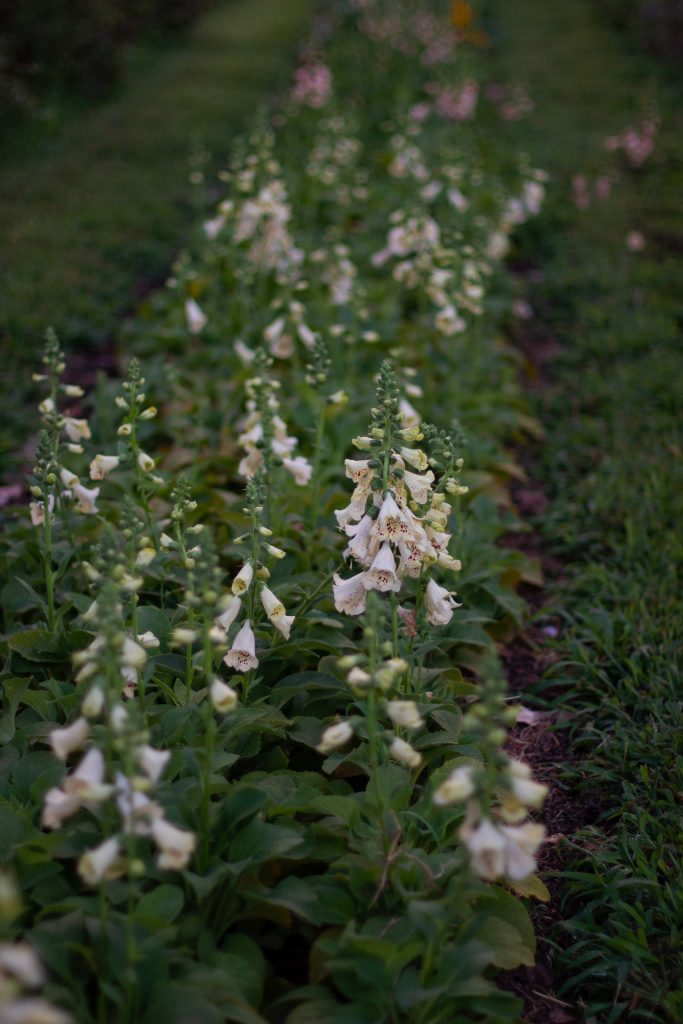
Foxglove should be harvested when 1/3 of the flowers on the spike are open. The rest of the florets will open in the vase. They tend to last about 5-7 days in an arrangement. Changing the water in the vase really helps extend their life. Foxglove, like many spike flowers, are sensitive to ethylene gas, so keep them away from ripening fruit and vegetables.
It’s very important to note that all parts of the foxglove plant and flower are very poisonous. Never ever use foxglove on cakes or other edibles!!! Also be careful with them around small children, who tend to be fascinated by the little fairy cap blooms. Because of this, foxgloves are not a good retail flower for a farmers market or grocery store setting.
Learn more about growing specific cut flower crops here on our blog. Check this previous blog post highlighting ranunculus and this blog post highlighting lisianthus. Happy growing!
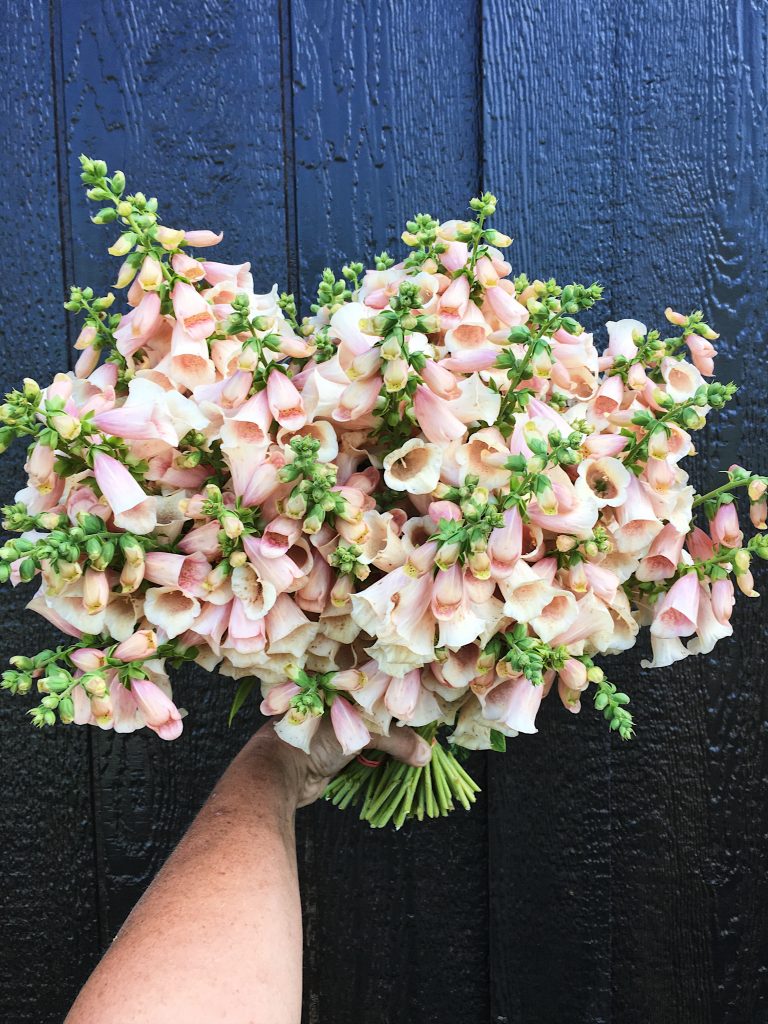

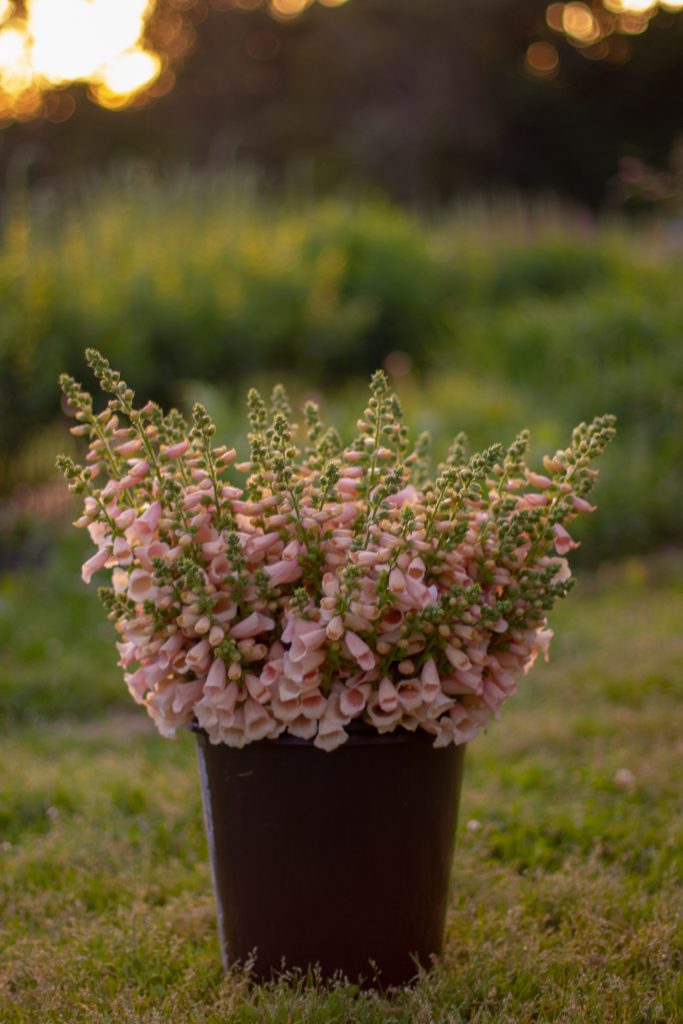
I’ve just moved into a house in the Scottish Highlands and I’m busy planning our garden. We have inherited a huge rose garden with only roses in it so it can look really bare during our long winters. I had a thought to line the rose bed with lavender and then grow foxgloves behind the lavender, in-between all the roses. Do you foresee any issues with the plan? I just love foxgloves and want to include as many as possible.
That sounds awesome! The foxglove will be a beautiful mid-border addition in your garden. 🙂
Jennie,
Second year farmer here. It sounds like you leave your foxglove in the ground for a couple of years? So you need a dedicated space? Or do you recommend just treating it as an annual? Zone 8b.
Thanks!
Good question! It depends on the variety. Some foxglove varieties are true perennials, meaning they’ll come back for many years. Other foxglove varieties function more as biennials, so they’ll only be productive for about two years. Others are what we call First Year Flowering (FYF) and so those can be treated as annuals if you want. So really, it just depends. I grow several varieties and each gets treated according to their life cycle.
I’m so glad you mention these are poisenous, important to know. With that in mind do you recommend gloves when handling them. I pull out lots of plants every year since they seed so readily and I don’t always wear gloves. Thank you!
Thank you for sharing all this information! We are starting some foxglove indoors for our Early Spring Planting. Any seed starting tips? Should we keep under lights or just heat matt until 50% germination? I sowed the seeds on top of a 128 cell and did not cover.
They’re pretty easy to get started from seed. Sounds like you’re off to a good start with your 128 tray and uncovered seeds. Perfect! I do put them on a heat mat set at 70F. Keep a humidity dome on top of the tray. I germinate all my trays in a prop house so the natural light is plenty, but if you’re starting in an enclosed room/basement, then, yes you’ll need to start under lights.
Hiya, when you transplant your foxglove do your transplant out into an open field or do you use a hoop house? Thanks!
All my foxglove are out in the field.
Hi Jennie, can you tell me the spacing if I put my foxgloves in a raised bed? I am new to growing but dreaming of flowers!!
We typically space foxglove at either 8″ or 12″ apart. If they are a biennial variety that will flower the first year, we use tighter spacing. If they are a perennial variety that we hope to establish for several years, we use wider spacing.
Is it OK to pinch seedlings to get multiple stems, (like with snapdragons) or do I need to keep the 1 stem like sunflowers?
I’ve never pinched foxgloves. They are multi-stemmed plants that keep producing cut after cut so they generally don’t need pinched.
Hello, I’m wondering what to do to my foxglove over the winter here in Missouri, zone 6. Do you cut back foliage at all? Just cover them with frost cloth? Thanks!
Hi Jennie, do you have any idea how long foxgloves can be stored in a cooler and still maintains decent vase life once pulled out and arranged?
It’s not very long lasting so typically I wouldn’t hold it in the cooler much longer than 4 or 5 days before using in designs.
Any favorite perennial varieties? I always get confused on which are biennial vs perennial.
Also, thoughts on Dalmatian white vs apricot. Our white foxglove seems to be not as strong stemmed, kind of floppy. The apricots are great. I might be having a similar issue with some snaps right now so it could be a bigger issue.
Thanks!